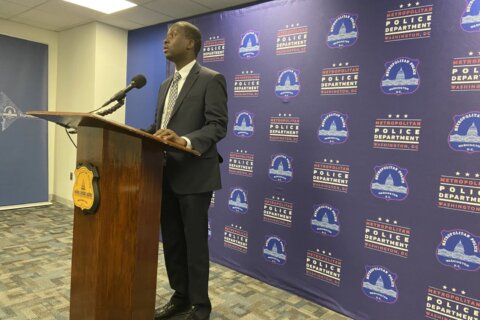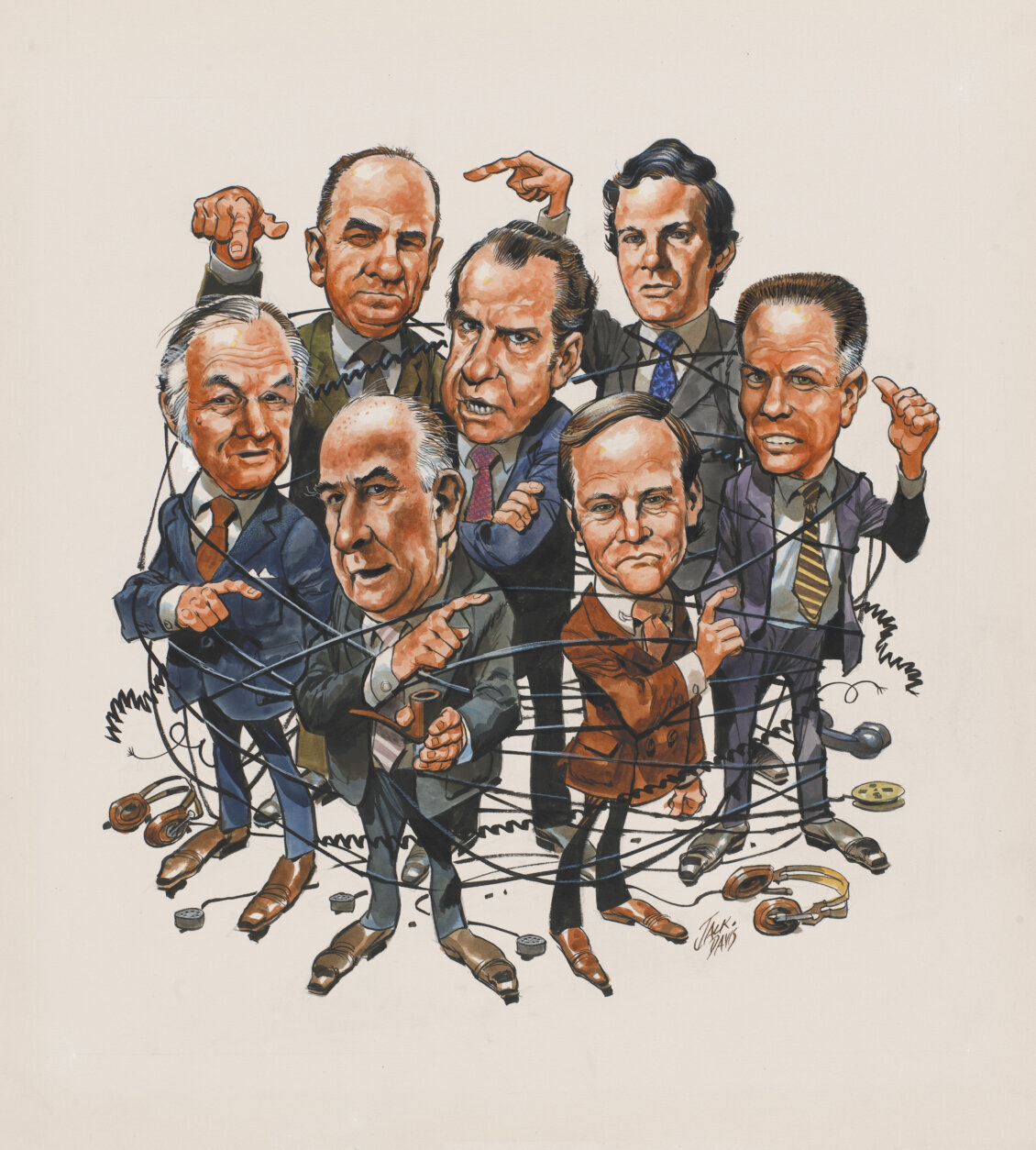
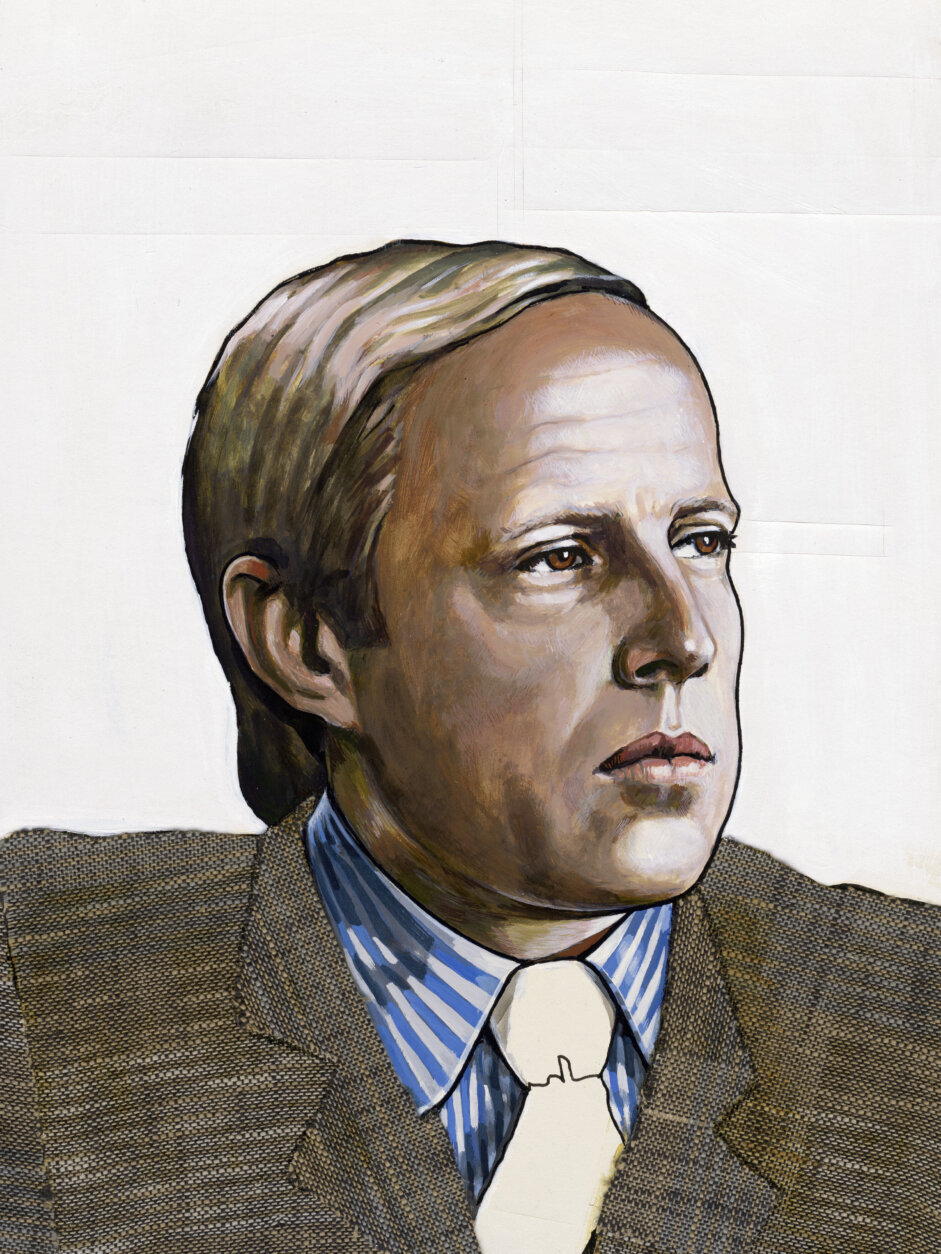
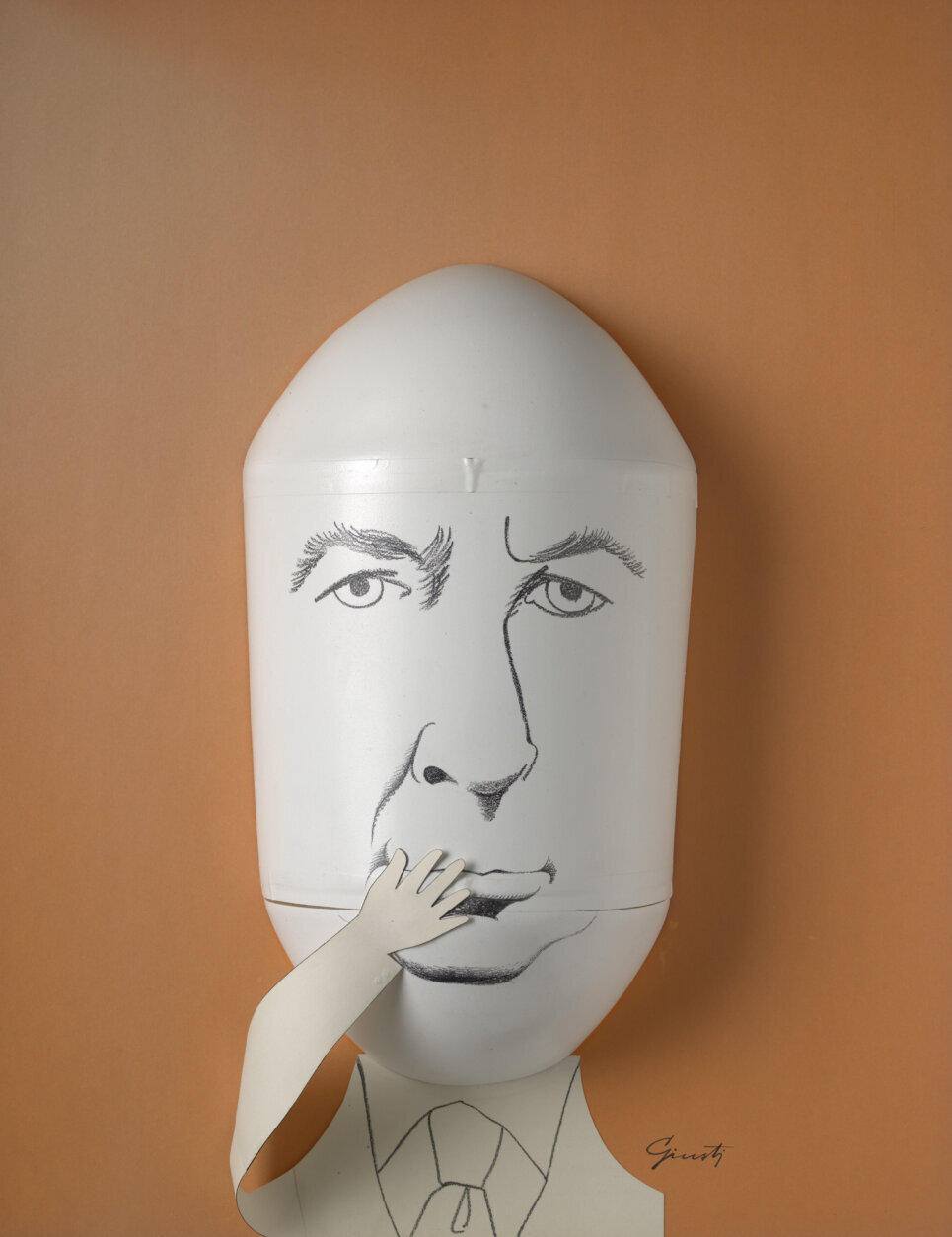
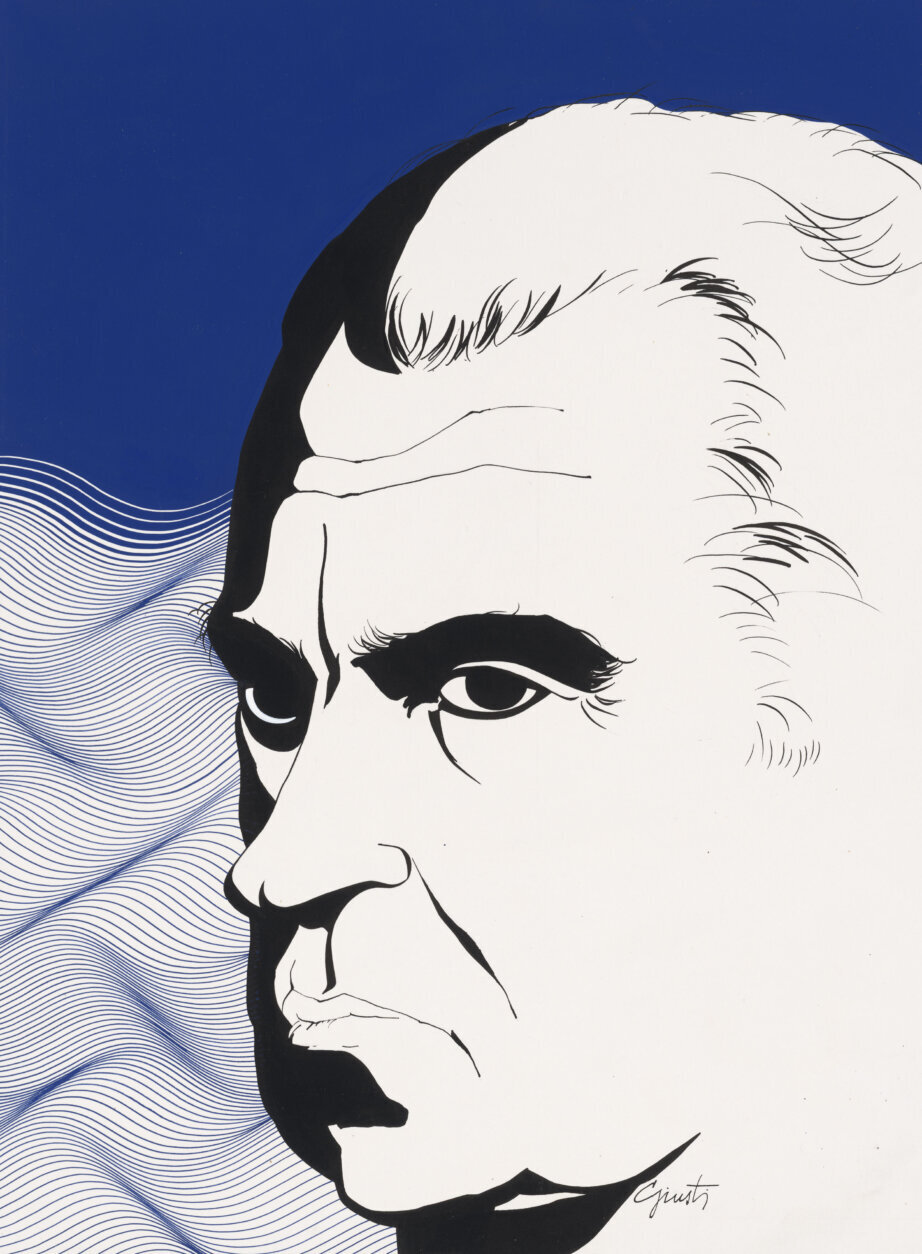
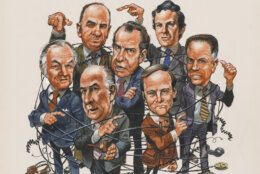
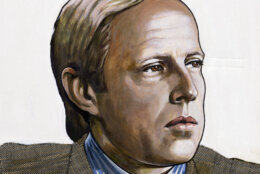

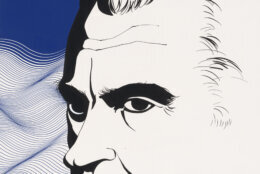
The Watergate break-in and President Richard Nixon’s eventual resignation inspired a deluge of hearings, headlines and history books. Artists had a field day with it as well.
Now, on the 50th anniversary of one of America’s most enduring political scandals, the Smithsonian’s National Portrait Gallery examines how artists captured Nixon’s ignominious downfall in “Watergate: Portraiture and Intrigue.”
The exhibition, on view from March 25 to Sept. 5, is made up of 25 objects ranging from photography to sculpture to iconic Time magazine covers.
Those Time covers are actually part of a vast trove, said Kate Clarke Lemay, acting senior historian of the National Portrait Gallery and curator of the exhibition.
“We have around 2,000 portraits that Time Magazine donated to us over the years that were featured as cover art,” she told WTOP. “So it was a great opportunity for us to showcase one of the real gems of our collection that I don’t think a lot of people know about.”
The magazine devoted 40 cover stories alone to the Watergate scandal, 12 of which are on display in the new exhibition. They join other pieces that offer a unique lens through which to view the series of events that began with the 1972 break-in at the Democratic National Committee offices inside the Watergate complex and culminated in Nixon’s resignation two years later.
Throughout that turbulent time, the media relentlessly pursued the story, but so did artists, and their visual commentary also made a powerful statement about Nixon’s abuse of office.
In many ways, the work of investigative journalists, political cartoonists and artists bounced off each other, creating a vivid picture of a dysfunctional presidency.
In the exhibition, sometimes the picture that emerges is serious, other times it’s playful. Lemay said she enjoyed mixing up fine art, pop culture and other genres.
“We have some fabulous portraits by Richard Avedon, who’s a major photographer and an artist of portraiture. We also have these really funny, kind of crazy sculptures,” she said.
One of those is by Marisol Escobar, who carved a likeness of Nixon and Henry Kissinger side by side in marble, reminiscent of Mount Rushmore.
“So there’s some playfulness in this portraiture that I think helps us understand the different levels that were involved in the media’s presentation of the Watergate scandal. And I’m very pleased to … put them in conversation with very, very serious portraits,” Lemay said.
But even the dignified portraits take on a different light knowing how behind the scenes many in Nixon’s circle worked to cover up their transgressions.
Artist Stanislaw Zagorski plays on this dichotomy with his portrait of John Dean, Nixon’s White House counsel, who became a key witness in the prosecution of his boss.
“It’s a really nice portrait of his face, and you really get a good likeness of him,” Lemay said.
At first glance, the portrait appears to be an oil on canvas, but Zagorski actually glued on the board cloth that looks like a tweed jacket.
“So he looks very dignified, but then you get up close to the portrait and you realize that there are these different kinds of fabrics involved” — much of them unraveling and frayed at the edges, she said.
Lemay said another striking piece comes from cartoonist Draper Hill, who blended caricature and high art to skewer an increasingly isolated and despondent Nixon.
Hill’s piece is based on Winslow Homer’s “The Gulf Stream,” which depicts a Black man struggling to navigate the stormy waters of the Atlantic in a rickety boat, with sharks encircling him. The 1899 painting speaks to the fragility of life, the legacy of slavery and other weighty issues, although Homer later added a schooner on the horizon to suggest the hope of a rescue.
Hill replaces the subject with a barefoot Nixon, sitting listlessly in a boat with a broken mast.
“But instead of having the hope of a boat in the distance, there’s just the storm and the sharks are circling,” Lemay said. “It’s funny, although it’s at [Nixon’s] expense, and it’s kind of sad, too, because these artists really saw what was coming and called it out in 1973.”
Artists, and the public, were able to see what was coming largely because of dogged reporters who worked to uncover it. That’s why Lemay said Watergate was not only a watershed moment in politics, but also in journalism.
“I do think that it’s important for us to consider … how important journalism is to uncovering abuse of power, and for audiences to contemplate how Watergate really was kind of this turning point for journalism,” she said. “And the obsession that people had, watching the Senate hearings on television, how that has marked our consumption of and understanding of the news to this day. It kind of started with this moment.
“I also think it’s important for our visitors to see how the art asks the important questions, like ‘Are politicians above the law?” she added. “Together, the art helps teach the whole cast of players in this history and underscores a lot of these ethical debates that were happening at the time that are still relevant to this day. So in that sense, the art is really timeless.”



